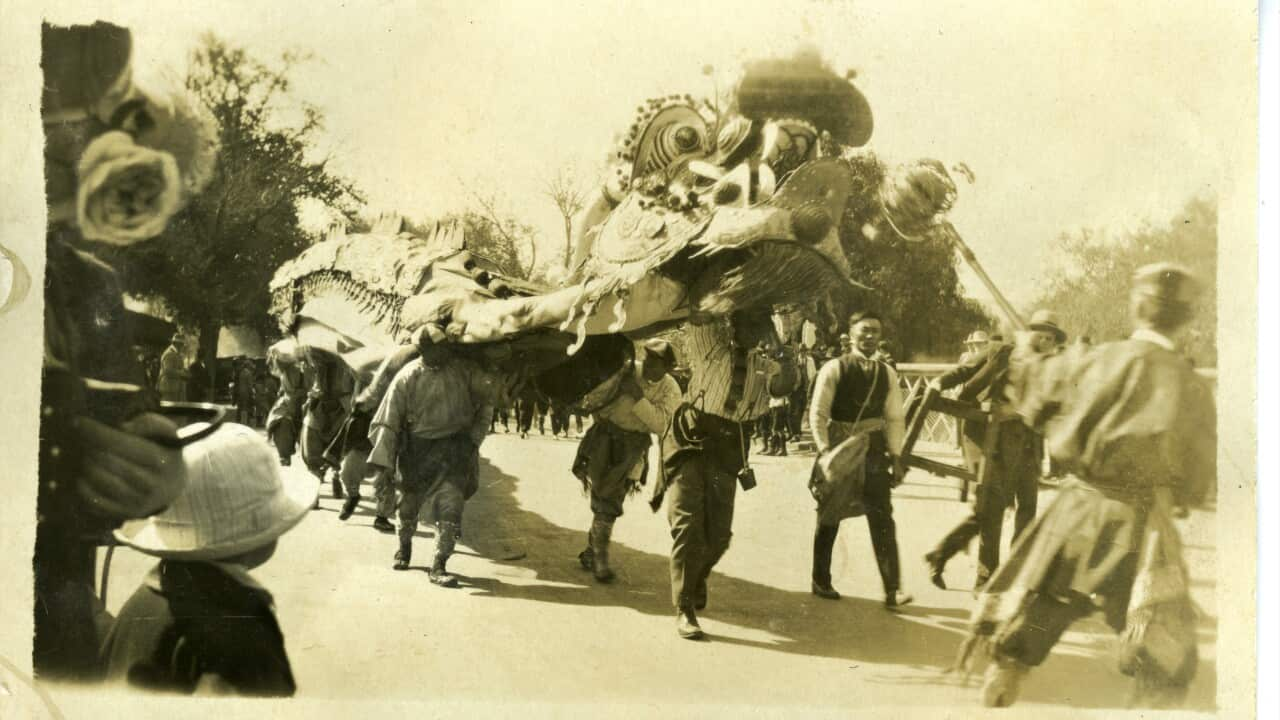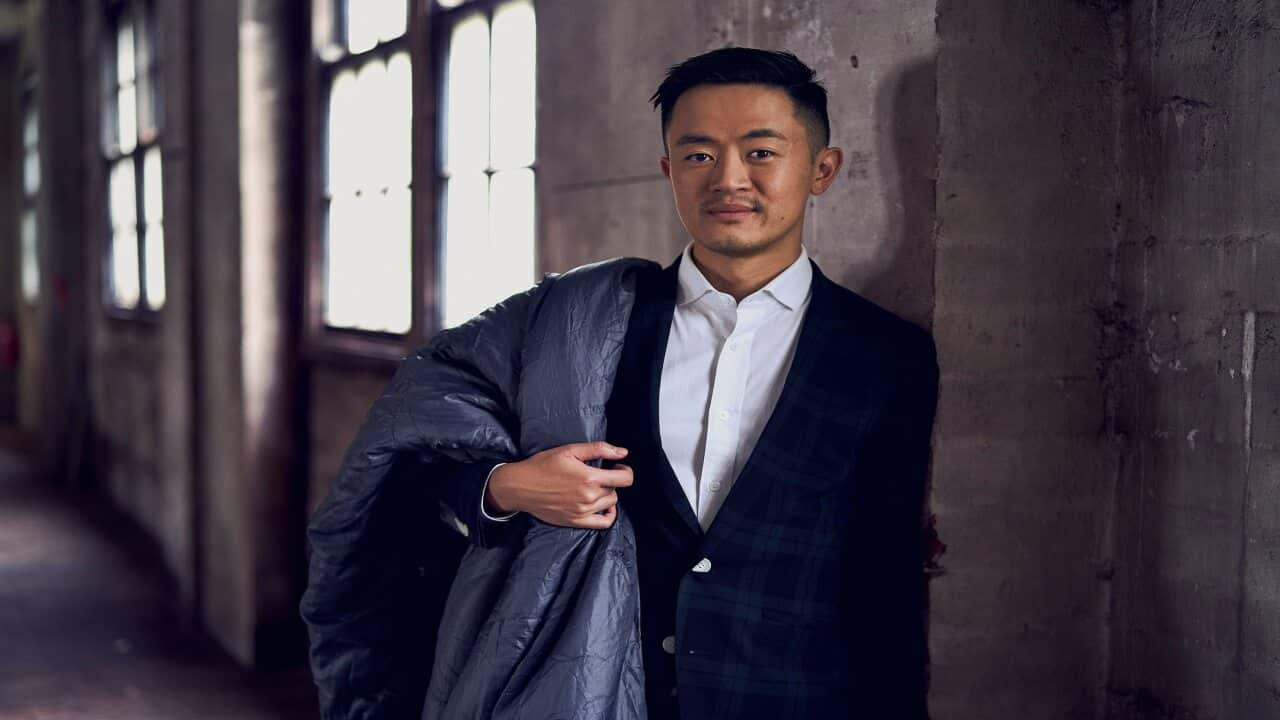Hugo Leschen, chief executive of the Golden Dragon Museum in Bendigo, said the team was “…very pleased to be granted $132,000 through Heritage Victoria from the Victorian government, which is a sizeable and very significant amount of money for a single conservation project.”
“Every mirror was cleaned and Loong has been turned around so when visitors enter the Sun Loong Gallery, it faces them from a head stand. It’s not rearing up of course because dragons are friendly so it meets visitors eye-to-eye.”
The parade dragon made of silk, mirrors, bamboo, kingfisher feathers and pulp has been revived over the past year thanks to the University of Melbourne's conservation team - Grimwade Conservation Services, the Golden Dragon Museum and the Bendigo Chinese Association.

Dr Holly Jones-Amin surveys restoration work on 'Loong'. Credit: Paul Burston and Grimwade
The dragon, made in Guangdong Province, arrived in Bendigo in 1901 to perform in an Easter Parade in the Gold Rush town. It would go on to perform in parades every year until 1970 with its appearance helping to raise money for charities including local hospitals.
Author and historian Leigh McKinnon (麦利) said: "He was a very successful dragon in the community, raising money not only in Bendigo but also in other towns and cities across Victoria for hospitals and sometimes Melbourne and Adelaide.

The May 1901 parade which represented Loong's first outing. Credit: Golden Dragon Museum

Loong in action. Credit: Golden Dragon Museum
Mr McKinnon said he believed Loong had become a symbol for the Chinese community in Australia.
“(Many Chinese) arrived long before 1901 at the beginning of the White Australia Policy and the restrictions on the Chinese and other non-white communities,” he said.
Loong is a good symbol of the resilience of the Chinese population in Australia from those colonial times through to the present day.Leigh McKinnon
"So, I think that he has a sort of message for all of us – the importance of multiculturalism, cultural respect and cultural sharing.”
Dr Holly Jones-Amin, who heads up the cultural conservation team at the University of Melbourne, said the conservation work included three main steps: cleaning, pasting and stitching, most of which is done with a vacuum cleaner with very low suction power, and a soft brush.

Dr Holly Jones-Amin finishing up restoration work on 'Loong'. Credit: Dr Holly Jones-Amin
"We painted that (Japanese tissue paper) to match the colour where we were repairing the scales and we applied it with tiny ink, tiny little bits of adhesive to hold that paper in place," she said.
This avoided the silk from deteriorating and prevented the liner material from being exposed or lost, she said.
She said the project also provided on-the-job training for conservation students, who trained at the University of Melbourne, where they could apply their PhD research.
She said the team used special, deionised water as a main cleaning agent as well as both a seaweed-based and a starch-based adhesive.
“The biggest challenge is the sheer scale. I will probably never work on something so big ever again,” she said.

Grimwade Conservation Services were commissioned to oversee the restoration of 'Loong'. Credit: Paul Burston and Grimwade Conservation Services
“We had a conservation student working side-by-side with a community member which was really enlightening and interesting and fun for us because we got to hear stories about Loong over the years,” she said.
The dragon was last seen at the Easter Parade in 2019, when it welcomed new dragons Dai Gum Loong, Sun Loong and a night dragon (Yar Loong), which are currently in the collection of the Golden Dragon Museum.


